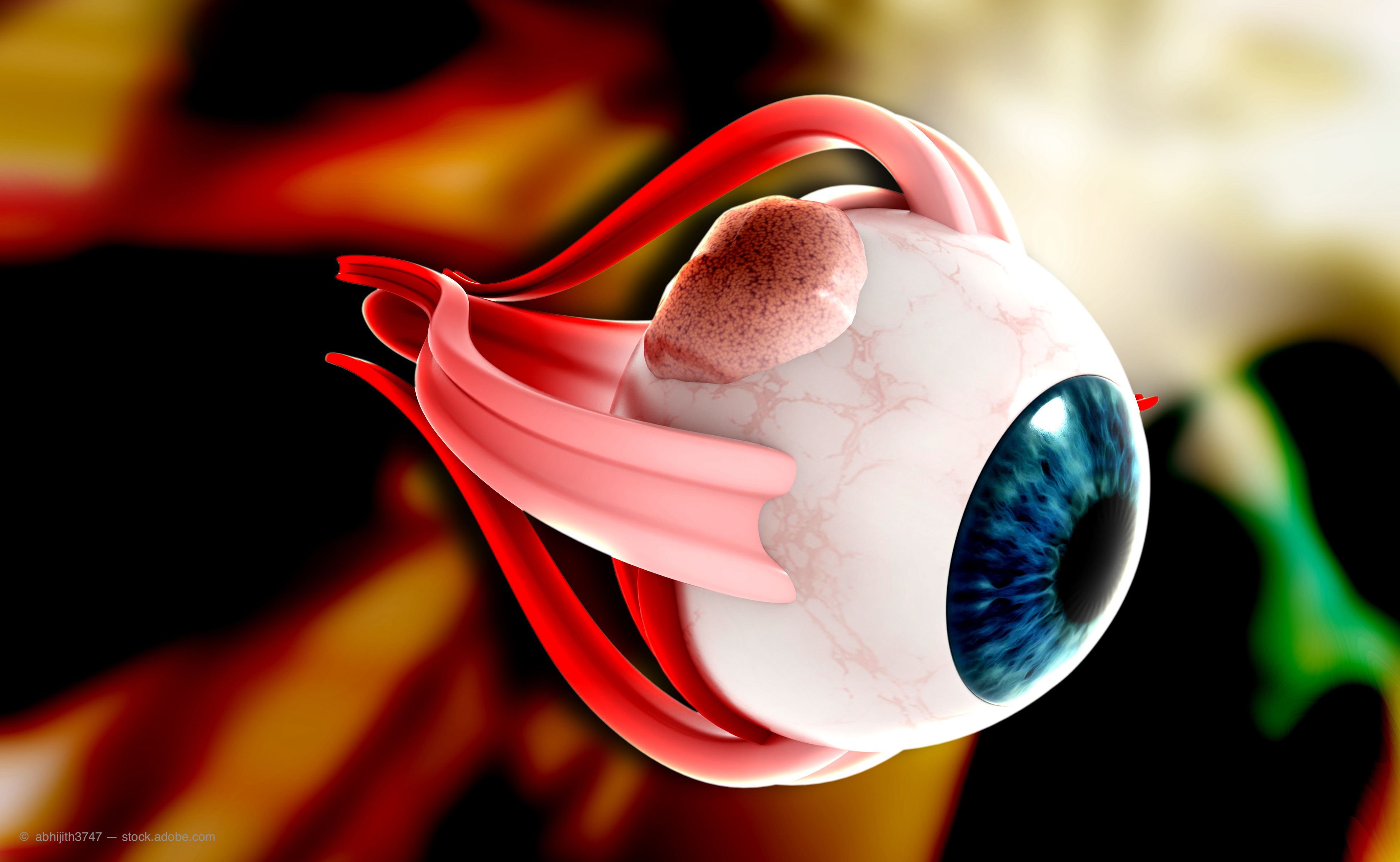Publication
Article
Digital Edition
The proteome of proliferative vitreoretinopathy: insight into the central role of extracellular matrix
Author(s):
Study highlights extracellular matrix-related proteins expressed in PVR.


Special to Ophthalmology Times®
Despite significant advances in vitreoretinal surgery over the past several decades, proliferative vitreoretinopathy (PVR) remains the leading cause of failure following retinal detachment (RD) repair, complicating 5% to 10% of rhegmatogenous detachments.1
Although significant effort has been applied to characterizing the various cell types and signaling molecules critical to the pathogenesis of PVR, a holistic understanding of the disease process remains elusive.
Related: Minimally invasive retinal reattachment procedure leads to enhanced photoreceptor integrity
This knowledge gap has hampered the development of novel therapeutics to prevent PVR following repair of chronic, traumatic, or recurrent RD.
Cataloging the complete proteome of PVR membranes will help yield mechanistic insight into the molecular pathogenesis of this disease.
METHODS
Six PVR membranes and 1 idiopathic epiretinal membrane (ERM) delaminated during a pars plana vitrectomy were analyzed by mass spectrometry.
Tandem mass spectra were extracted by Byonic software using the UniProt database. Spectra identifications were accepted at probabilities greater than 95%.
After filtering data from PVR samples for reproducibility, which were accepted when present in at least 4 of 6 samples, missing values were imputed with 0.5 spectral counts.
Related: Managing strabismus after retinal detachment surgery
RESULTS
The PVR proteome identified consists of 896 proteins. Gene Ontology pathway analysis of this protein list revealed enrichment of 2 pathways, extracellular matrix (ECM) organization and extracellular structure organization.
An independent search of the Reactome Functional Interaction Network also identified the ECM organization to be enriched to a significant degree (P = 1.11x10-16) in PVR tissue, with the highest total number of reactions present (242/318) of any pathway in the database.
Other pathways related to ECM that reached statistical significance included integrin cell surface interactions (45/48 reactions, P = 1.11x10-16), ECM proteoglycans (22/23 reactions, P = 1.11x10-16), and nonintegrin membrane–ECM interactions (17/22 reactions, P = 1.11x10-16).
Related: Disparities in care of retinal detachments
Notably, these pathways denote the cellular nature of PVR membranes because they are not the proteomic signature of inert fibrotic plaques but dynamic cell-matrix composites.
Other pathways that ranked amongst the top 10 include adaptive immune system, class I major histocompatibility (MHC)-mediated antigen processing and presentation, class II MHC antigen presentation, antigen processing-cross presentation, antigen presentation; folding, assembly and loading of class I MHC, and eukaryotic translation initiation.
These pathways reflect the central importance of the inflammatory cascade in the pathogenesis of PVR.
Fold change analysis was performed comparing PVR with idiopathic ERM, and a statistically significant difference (Fisher’s exact test, P < .00528) in total spectrum counts was found for 101 proteins.
Significant interaction networks (P < .05) were identified based on known protein-protein interactions in published literature (knowledge base).
Related: Managing a changing landscape of IRD pediatric cases
Overall, the highest fold change was in fibronectin levels, a 220-kDa glycoprotein that is an important constituent of the extracellular matrix, with 130-fold higher mean total spectrum counts in PVR than in idiopathic ERM.
Fibronectin was also observed to be a hub within the interaction network, with known connections to 27 other proteins—the most of any protein identified.
Cells derived from PVR membranes and propagated in vitro stain positively for fibronectin by immunofluorescence and can be seen to organize cytoskeletal components and focal adhesion complexes necessary for assembly of mature ECM.
Conclusion
Studies aimed at characterizing PVR membranes histologically focused on the importance of ECM in the composition of preretinal proliferations.2
Related: Retinal nonperfusion, leakage linked with center-involved DME
Further studies focused on upstream mediators of disease progression, including signaling pathways related to inflammation and cell proliferation in the search for medical therapies for the prevention of PVR.3,4
This study highlights the preponderance of extracellular matrix-related proteins expressed in PVR. Prior applications of proteomic analysis have sampled human vitreous or animal-derived PVR membranes, rather than patient-derived tissue.5,6
Aberrant ECM deposition increases tissue stiffness and prevents retinal relaxation necessary for reattachment. Targeted inhibition of these pathways may represent an option in the treatment of patients at high risk for PVR.
--
Charles G. Miller, MD, PhD
p: 917-270-5445
e:Charles.miller1@pennmedicine.upenn.edu
Miller has no financial disclosures related to this content.
--
REFERENCES
1. Schwartz SG, Flynn HW Jr, Wang X, Kuriyan AE, Abariga SA, Lee WH. Tamponade in surgery for retinal detachment associated with proliferative vitreoretinopathy. The Cochrane Database Syst Rev. 2020;5(5):CD006126. doi:10.1002/14651858.CD006126
2. Michels RG. A clinical and histopathologic study of epiretinal membranes affecting the macula and removed by vitreous surgery. Trans Am Ophthalmol Society. 1982:80:580-656.
3. Hinton DR, He S, Jin ML, Barron E, Ryan SJ. Novel growth factors involved in the pathogenesis of proliferative vitreoretinopathy. Eye (Lond). 2002:16(4):422-428. doi:10.1038/sj.eye.6700190
4. Idrees S, Sridhar J, Kuriyan AE. Proliferative vitreoretinopathy: a review. Int Ophthalmol Clin. 2019:59(1):221-240.doi:10.1097/IIO.0000000000000258

Newsletter
Don’t miss out—get Ophthalmology Times updates on the latest clinical advancements and expert interviews, straight to your inbox.





